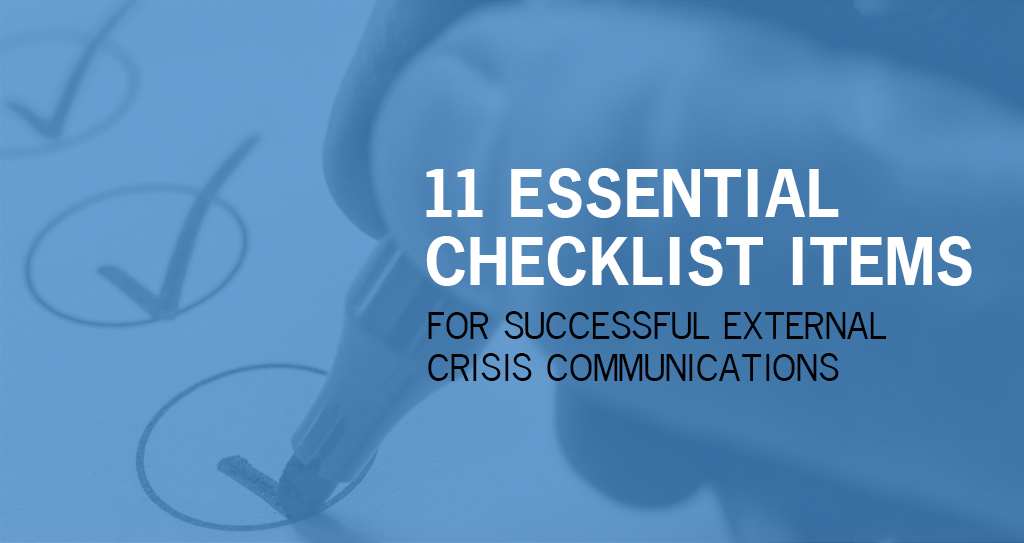There’s no doubt that we’re living in a strange time with a new crisis around every corner. It’s hard to find a person, family or business who is not impacted financially, socially, medically, or in some other way by the COVID-19 pandemic. Though global pandemics are not a common occurrence, everyday crises are and regardless of the crisis at hand, the fundamentals for handling the situation and communicating to external audiences remain the same.
Whether it’s a merger and acquisition, environmental challenge, a production accident, bankruptcy, facility fire or even a global pandemic, the success of a major change or impact of a crisis event is heavily affected by how the reputation of a company is managed. What it boils down to is delivering the right messages, to the right people, at the right time to mitigate and manage reputation damage that can affect the bottom line.
To ensure you’re prepared now, or the next time you’re combatting a crisis, specifically one that creeps up on you, we have created a list of the top 11 external communication considerations for putting out the fire.

You need to be efficient and quick to own the storyline before somebody else beats you to the punch, but not rash. Timing is paramount, as is the message, so first you need to understand the answers to key questions:
- What happened?
- Who is at risk?
- Were there any injuries or fatalities?
- What/who has been impacted?
- Were external parties at the scene e.g. police?
- Was the crisis event contained or has it spread?
- Have there been any other recent crises that could be tied to this incident?

Assess if there are any legal implications, what the general timeline is for the crisis and anticipated outcomes. Legal should be brought into the loop immediately to help assess.

Who needs to be abreast of and/or approve each and every move? For more internal-focused insights, check out our article on Internal Crisis Communications strategies.

Once the critical players are determined, quickly assemble them by phone to level-set strategy and immediate tasks, and schedule the cadence of report-in calls as the crisis dictates – daily, hourly, or more frequently – to stay abreast of the fluid situation.

Who are your key stakeholders externally? Customers, suppliers, shareholders, media, local communities, government officials, etc. all will need to be communicated to. The order you communicate with these audiences – and the messages delivered – will vary depending on the situation.

Determine the who/what/where/when/why answers that are most critical for your audiences to know. Make your messages clear, direct and genuine – this is not the time for adding extra noise. Those messages will become the basis for all of your external communications. Ensure everyone on your team that will be directly responding to inquiries understands what should and should not be shared.

First, determine who your spokesperson will be. Keep in mind that using the CEO doesn’t always make the most sense. When selecting a spokesperson, work to examine exposure, critical level of the crisis, technical knowledge required, availability, frequency, familiarity with audiences, and ability to calmly and clearly communicate. Then coach that spokesperson through the details of the situation, nuances of the messages, expectations, and off-limits topics that should be averted. After each appearance, regroup and discuss what worked well and what topics need more data.

You’ve already identified your key audiences, so consider where those audiences would look for news. Established social media channels are a great option for quickly disseminating information, owning the message and getting information out in real time. It’s also important to consider that certain audiences will need to be communicated with directly to maintain relationships. If a situation is changing rapidly – as has been the case with COVID-19 – creating a blog or landing page dedicated to updates regarding the situation can be a good tactic to deploy.

To support your messages, quickly create materials that audiences can use, share and refer to. These could be simple bulleted fact sheets, a corporate media statement, a timeline of events, and company background materials that are readily accessible to external audiences. If you don’t provide this information, audiences will seek it from other sources, and it likely will be inaccurate.

The job isn’t done once a message is distributed. Your team needs to remain nimble and open to engaging with key audiences. Social media can be a valuable tool for two-way communication when used properly. Be sure to have a team member tasked with monitoring questions/comments and responding in a timely fashion – otherwise you’ve missed an opportunity to demonstrate you care and are here for your stakeholders.

Don’t appear tone deaf. Pay attention to what the media coverage and stakeholder response has been to the current crisis and attempt to add to or flip the storyline accordingly as opportunities present themselves. Go back to your initial list of questions and check facts to see what’s changed, if new issues have come up or if other resources are required.
Not every situation is the same. The key to successful crisis communications campaigns is having the knowledge to create strategic communications plans, the experience to anticipate obstacles and the skills to manage the situation…quickly. Take time to put together a full-scale crisis communications strategy in advance. If you need assistance, please contact our team to discuss how we can support you and your company during a crisis.
